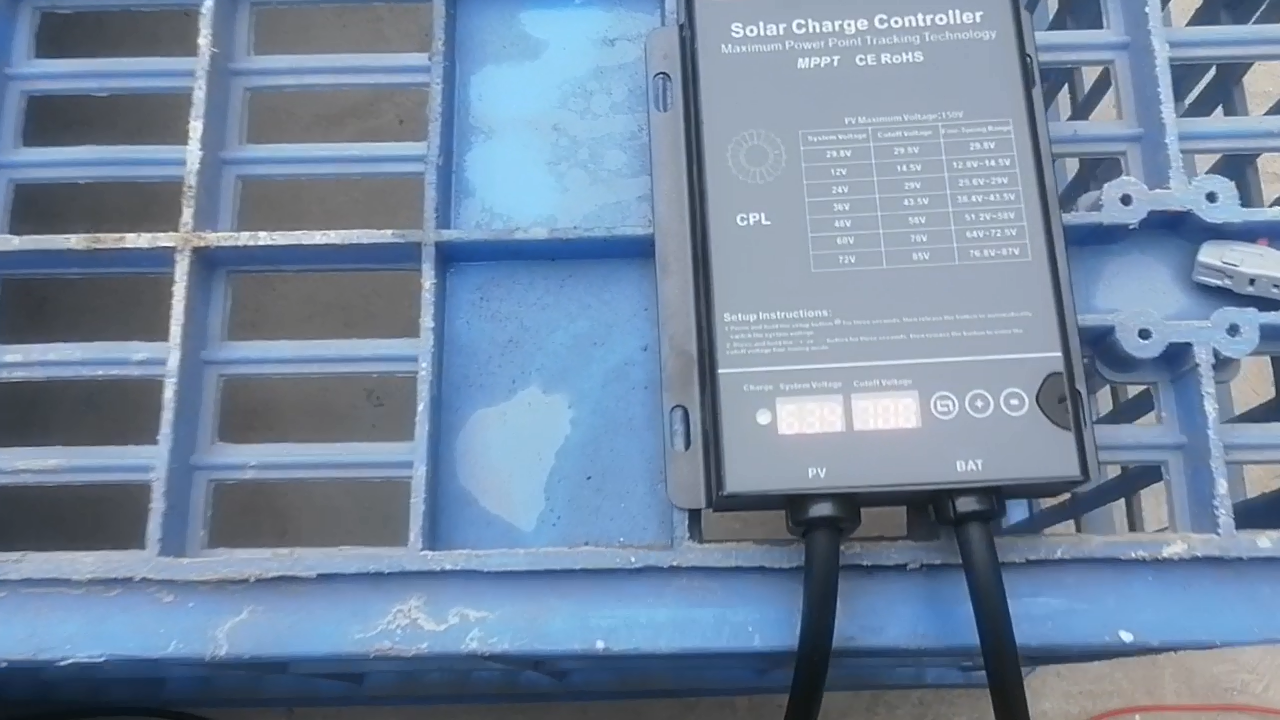In the era of sustainable energy and green transportation, electric vehicles (EVs) have emerged as a cornerstone of future mobility. However, providing EVs with more efficient, flexible, and eco-friendly charging solutions remains a shared challenge for users and tech developers. The advent of MPPT (Maximum Power Point Tracking) solar boost controllers offers an innovative answer to this problem. This article dives into the working principles, core advantages, and transformative benefits of this technology for EV users.
I. What is an MPPT Solar Boost Controller?
An MPPT solar boost controller is an intelligent energy management device designed to optimize collaboration between solar photovoltaic systems and battery storage. Its core function is to dynamically track the solar panel’s Maximum Power Point (the peak power output under varying light and temperature conditions) and adjust the voltage via a boost circuit to match EV battery requirements. Compared to traditional PWM controllers, MPPT technology improves energy conversion efficiency by 20%-30%, especially in voltage-mismatch scenarios (e.g., low-voltage solar panels charging high-voltage EV batteries).
II. Why Do EVs Need Dedicated Solar Boost Controllers?
- Voltage Compatibility Challenges
EV battery packs typically require higher voltages (e.g., 48V, 72V, or more), while individual solar panels output lower voltages (12V-24V). Standard controllers cannot boost voltage effectively, leading to energy waste or charging failure. Boost controllers solve this with intelligent voltage regulation. - Maximized Energy Harvesting
EVs rely on battery range, but solar energy fluctuates due to weather and panel angles. MPPT technology optimizes energy capture in real time, extracting maximum power even in cloudy or low-light conditions to extend driving range. - Off-Grid Charging Freedom
For outdoor adventures, camping, or remote areas, MPPT controllers enable direct solar-to-battery charging, eliminating grid dependency and enabling zero-carbon “charge while driving.”
III. Core Advantages of MPPT Solar Boost Controllers
- High-Efficiency Conversion
Advanced algorithms track the maximum power point, paired with >95% boost efficiency, drastically reducing charge times. For example, with 1000W solar input, traditional controllers might use 700W, while MPPT extracts over 900W. - Wide Voltage Compatibility
Supports 12V/24V solar input, boosting output to 36V-120V (customizable for EV models), compatible with mainstream EVs: e-bikes, e-motorcycles, and compact electric cars. - Smart Protection Mechanisms
- Overcharge/Over-discharge Protection: Monitors battery health to extend lifespan.
- Temperature Compensation: Adjusts charging parameters for extreme heat or cold.
- Reverse Polarity/Short-Circuit Protection: Eliminates installation risks.
- Modular Scalability
Users can parallel multiple solar panels or controllers to expand power generation, meeting demands for long-range or high-consumption EVs.
IV. Applications and User Benefits
- Daily Commuting: Install solar panels + controllers in home garages or parking lots for free daytime charging, reducing energy costs.
- Long-Distance Travel: Roof-mounted foldable solar panels with controllers enable “unlimited range,” ideal for RVs or outdoor explorers.
- Emergency Backup: Rapidly deploy off-grid charging stations during blackouts or disasters.
V. Future Trends: Deeper Solar-EV Integration
With advances in lightweight flexible panels and high-efficiency MPPT chips, future controllers will become smaller and smarter:
AI-Powered Charging: Weather-based dynamic charging strategies.
Vehicle-to-Grid (V2G): EVs feed surplus solar energy back to the grid, participating in energy trading.
Integrated Design: Solar roofs and energy-harvesting windows with built-in controllers for self-sustaining “eco-vehicles.”
Last but not least,the AU government announced ‘Fast Charger for Heavy Battery Electric Vehicles’ project will develop 6 MW fast chargers, capable of charging 240 tonne battery electric trucks in under 30 minutes.It shows that the controller which can boost the current to match the electric vehicles is so important.
Conclusion: Green Tech Drives the Future
MPPT solar boost controllers are more than tools—they bridge renewable energy and smart mobility, offering EV users economical, eco-friendly, and liberating power solutions. As technology evolves, solar energy may redefine our understanding of “charging”: wherever sunlight reaches, power follows.
Upgrade Your Charging System Now—Let Every Ray Empower Your Journey!
(Note: Always select a controller compatible with your EV’s specifications and consult professionals for installation.)
Reference
1:How To Make Your Next Road Trip Greener http://How To Make Your Next Road Trip Greener
2:Fast charging for iron ore mining https://arena.gov.au/news/fast-charging-for-iron-ore-mining/



